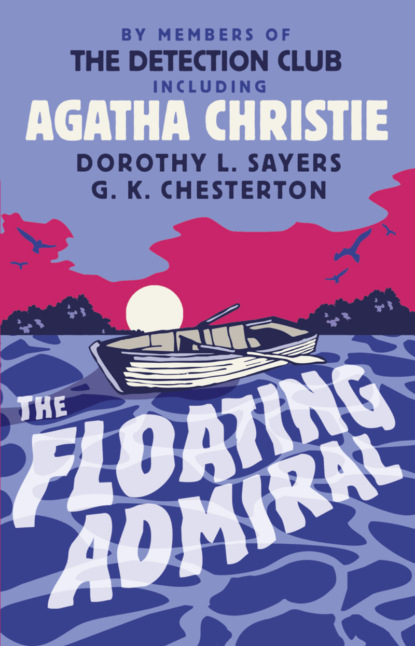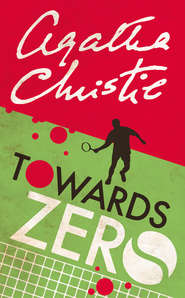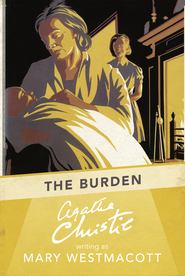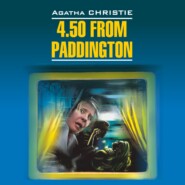По всем вопросам обращайтесь на: info@litportal.ru
(©) 2003-2025.
✖
The Floating Admiral
Автор
Год написания книги
2019
Настройки чтения
Размер шрифта
Высота строк
Поля
Chapter IV
Mainly Conversation
By Agatha Christie
Chapter V
Inspector Rudge begins to form a Theory
By John Rhode
Chapter VI
Inspector Rudge Thinks Better of It
By Milward Kennedy
Chapter VII
Shocks for the Inspector
By Dorothy L. Sayers
Chapter VIII
Thirty-Nine Articles of Doubt
By Ronald A. Knox
Chapter IX
The Visitor in the Night
By Freeman Wills Crofts
Chapter X
The Bathroom Basin
By Edgar Jepson
Chapter XI
At the Vicarage
By Clemence Dane
Chapter XII
Clearing up the Mess
By Anthony Berkeley
Appendix I
Solutions
Appendix II
Notes on Mooring of Boat
Counsel’s Opinion On Fitzgerald’s Will (#litres_trial_promo)
About the Publisher
Map
FOREWORD
By Simon Brett
PRESIDENT OF THE DETECTION CLUB 2001–
IT is appropriate that the origins of the Detection Club are shrouded in mystery. No official archives for the organisation have ever been kept and so its history has to be pieced together from the memoirs, correspondence, hints and recollections of its members. One reason for this incomplete record may be that the Club originally prided itself on being a kind of secret society, with rituals known only to its initiates. In the days of the internet, however, such a level of security is impossible. Indeed, an extract from the Detection Club’s most secret rite, the Initiation of New Members, is readily accessible on Wikipedia.
So the Club’s history is, at the best, conjectural. One authority declares that it was founded in 1932 with 26 members, but this assertion is somewhat weakened by the fact that a letter was published in the Times Literary Supplement in 1930 and signed by “members of the Detection Club”. And the serials The Scoop and Behind the Screen appeared in The Listener respectively in 1930 and 1931. They were written by multiple authors, including Agatha Christie, Dorothy L. Sayers, E. C. Bentley and Anthony Berkeley, under the name of the Detection Club, as was this work, The Floating Admiral, whose copyright notice on the first edition reads: “The Detection Club 1931”.
So a more likely prehistory of the Club was that round about 1928 Anthony Berkeley Cox (who only used his first two names on his books) and other detective writers started to meet for informal dinners, which then became more established into the rituals of a Club. According to some sources, G. K. Chesterton was appointed the first President—though sometimes referred to as “Leader”—in 1930. Mind you, other authorities say that he didn’t take over the Presidential mantle until 1932. Even the Detection Club itself is inconsistent about the date. On its headed notepaper is stated that Chesterton’s reign began in 1932, whereas in the List of Members it says 1930. So you can really take your pick.
What is certain, however, is that, on 11 March 1932 the “Constitution and Rules of the Detection Club” were adopted. The opening section of this document reads: “The Detection Club is instituted for the association of writers of detective-novels and for promoting and continuing a mutual interest and fellowship between them.” Members had to fulfil “the following condition: That he or she has written at least two detective-novels of admitted merit or (in exceptional cases) one such novel; it being understood that the term ‘detective-novel’ does not include adventure-stories or ‘thrillers’ or stories in which the detection is not the main interest, and that it is a demerit in a detective-novel if the author does not ‘play fair by the reader’.”
In this 1932 Constitution, the Ordinary Meetings of the Club should be “not fewer than four in the year”, so things haven’t changed that much. In 2010—and for many years before that—the Detection Club met three times.
What has changed is the criterion of admissibility for potential candidates. With the great spread of crime fiction’s range, the qualification has been extended way beyond the traditional whodunit (which is just as well, because very few people nowadays write traditional whodunits). The current membership certainly includes writers of “adventure-stories or ‘thrillers’ or stories in which the detection is not the main interest”, as well as practitioners of the historical, legal, forensic, psychopathological and other developing subgenres. Crime fiction is a much broader church now than it was in the 1920s and 1930s, and the Detection Club reflects that.
Some would argue that contemporary mysteries are much more varied and frequently better written than the offerings of that so-called “Golden Age”. They are certainly more psychologically credible than many of the works produced at that time. They are also more serious, sometimes even to the point of taking themselves too seriously. In crime fiction, noir is the new black.
Most of these differences could be seen as improvements, but the one thing that has been lost with the passage of time is the sense of fun that used to be associated with crime fiction. In her introduction to The Floating Admiral, Dorothy L. Sayers’ description of the collaborative exercise is: “the detection game as played out on paper by certain members of the Detection Club among themselves.” And later she writes: “Whether the game thus played for our own amusement will succeed in amusing other people also is for the reader to judge.” The fact that the book is being reissued yet again suggests that there are still plenty of readers out there willing to be amused by the game.
A lot of Golden Age crime novels were games. A murder mystery was an intellectual challenge rather on the same level as a crossword—and it’s interesting that the two forms of entertainment both developed around the same time. In the days before television, in the days of country house parties, such games were very popular. Collections of crime puzzles—like F. Tennyson Jesse’s The Baffle Book, A Parlour Game of Mystery and Detection—sold in large numbers. It was indeed the age of the parlour game … which hardly exists nowadays. People don’t have parlour games. Very few of them even have parlours.
But it is in the spirit of a parlour game that The Floating Admiral should be approached. The idea of a serious (should I use that awful word “literary”?) novel written by a relay of authors is incongruous. For a light-hearted work of crime fiction, though, the concept is fun, and I think it’s clear that the writers involved in The Floating Admiral enjoyed the intellectual challenge that faced them.
I have been involved in a couple of collaborative ventures of this kind and I very quickly discovered that the best job to get is that of the person who starts the story. In the first chapter you can sprinkle clues and inconsistencies with reckless abandon, secure in the knowledge that it won’t be you who has to tie up all the loose ends later. As a logical consequence of this, the worst job is writing the final chapter, pulling together all the threads of the story to produce a credible solution to the mystery. The temptation to begin that final chapter with the words “But it was all a dream …” is strong.
In The Floating Admiral this particular short straw was drawn by Anthony Berkeley, which was probably just as well. The author of The Poisoned Chocolate Case, who also, under the pseudonym of Francis Iles, produced the classic thriller Malice Aforethought, was equipped both as whodunit plotter and as someone who understood the psychology of the criminal mind. If he couldn’t make sense of the ending, nobody could, and I think it’s significant that his final chapter is entitled Clearing Up the Mess.
Berkeley is one of the contributors to The Floating Admiral whose name is still reasonably well known, at least to crime fiction buffs. The same could be said of Monsignor Ronald A. Knox, Freeman Wills Croft and Clemence Dane. Agatha Christie and Dorothy L. Sayers, of course, are big hitters, seemingly destined to endure forever, and G. K. Chesterton is still a well-known literary figure (though the Prologue he wrote to this volume seems to bear no relation to anything in the ensuing novel).

















